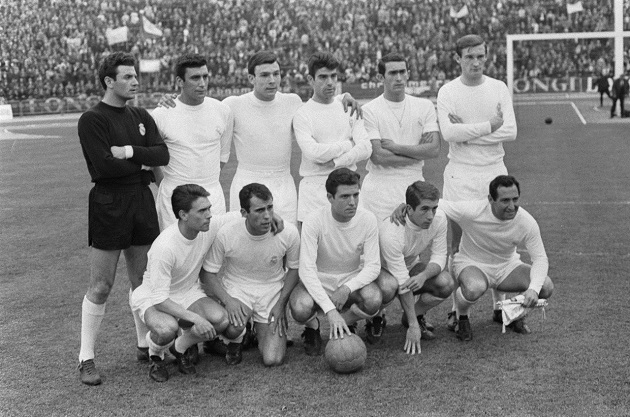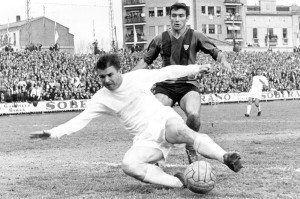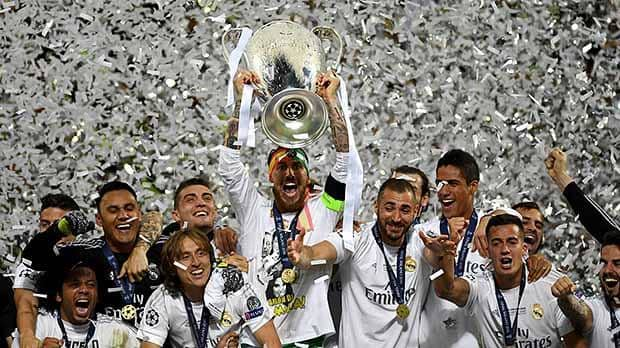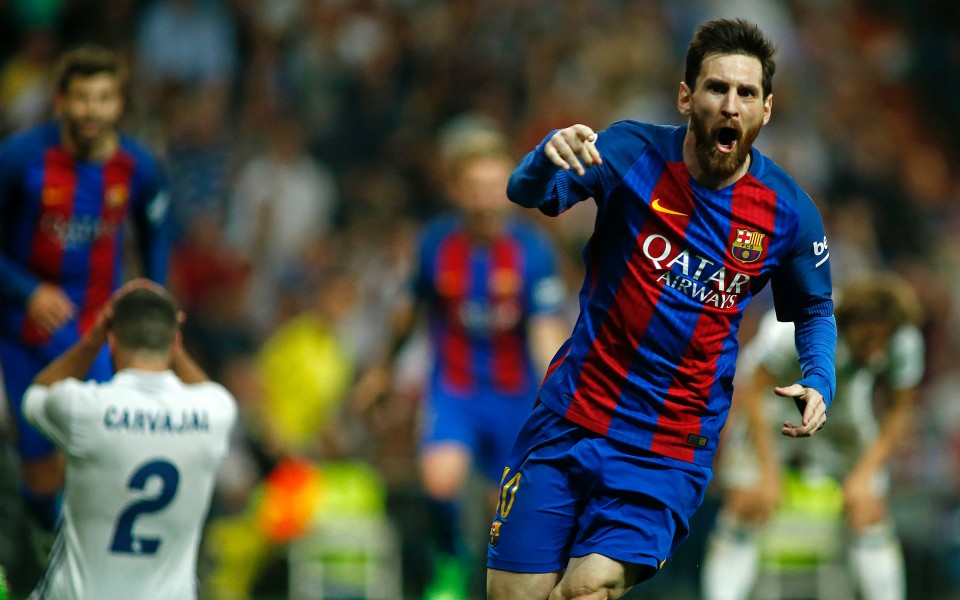Through over 100 years of history, Real Madrid has become one of the most recognizable names in world football. But how did they get there? In partnership with Howler magazine, The Center Circle is embarking on a multi-part journey from the roots of this historic club to the Cristiano Ronaldo era it enjoys today. If you consider yourself a Real fan, or really just a soccer fan in general, this is for you. Finally, do you see that “Hala Madrid” graphic right above this? You can click on that to open up Howler’s incredible Real Madrid timeline, replete with informative tidbits, pictures, and some cool graphics. Scroll through each section, zoom in to read, and enjoy.
Previously: Part I – Part II – Part III – Part IV – Part V
Part VI: Coming Back Down to Earth
All good things must come to an end. After arguably stealing the best player of his generation, Alfredo Di Stefano, and taking a brilliant gamble on Ferenc Puskas, Real Madrid had dominated much of the 1950’s. However, time always wins out. Both players grew long in the tooth, and the star power faded considerably. A new generation would take up the reigns, but never reach the same heights. The 1960’s for Madrid was an era of great consistency but not consistent excellence.
After the loss to FC Barcelona in the European Cup, Madrid regrouped to make a few more deep runs in Europe. They reached the final in 1962 but lost to Eusebio‘s Benfica. They again reached the final in 1964, but lost to Helenio Herrera’s Grande Inter. At that point, with Di Stefano beyond the peak age of 30, Don Santiago Bernabeu decided to let the player’s contract expire. It was a time for renewal. Madrid signed Manuel Martin Sanchez from Real Valladolid, Jose “Pirri” Sanchez from Granada, and Manuel Velazquez from Malaga. In true Beatles style, the players grew out their hair and were dubbed the Ye-Ye generation (based on the Beatles’ lyrics of “Yeah Yeah”).
A year later, the rejuvenated roster reached the quarterfinals of the European Cup, but got thrashed by Benfica. However, the following year, the slightly more experienced Ye-Ye’s plus veterans Paco Gento and Ferenc Puskas won the club its sixth European Cup. Madrid beat FK Partizan 2-1 in the final, despite Puskas being unavailable. Puskas exited the club that summer, but Gento would remarkably stick around until 1971. The team also benefited from the steady hand of coach Miguel Munoz, a former captain that had been in charge for several years. To this day, he is the longest serving coach in club history: he managed the team from 1960 until 1974.
The sixth European Cup aside, the team largely floundered in Europe. However, at home, the Ye-Ye’s dominated. They won eight La Ligas and two Generals Cups. This includes a streak of consecutive La Ligas from 1960-65 and then 1966-69. Rival fans may point out that, by this time, General Franco had adopted the merengues as the unofficial team of Spain. Could the eight titles be attributed to a conspiracy? A more convincing explanation is that Madrid’s biggest rival, FC Barcelona, was saddled with debt – the club had tried to move to a new stadium, but couldn’t sell the old one. One the regime stepped in to force the local Catalan municipality to re-zone the land and allow Barca to sell it, the cules turned the ship around. In fact, Barcelona beat Madrid in the General’s Cup final with Franco in attendance at the Chamartin.
The two teams would face each other in the General’s Cup quarterfinals to end the decade, a series that ended in controversy. Madrid won the first leg 2-0 at home, but Barca were ahead 1-0 at home when a Basque referee awarded a controversial penalty for Madrid. The Barcelona players grouped around him and shouted, so he sent a few off. Then the cules grew angry and stormed the pitch, forcing the ref to run for cover and suspend the game. The Spanish federation suspended the ref for six months, but did not change the game’s result. Madrid advanced and then won the final vs. Valencia.
Thus, the 1970’s ended on a sour, if successful, note for both clubs. Madrid hit a rough patch in Europe, but won more than a handful of La Ligas. Barcelona finally sold Les Corts and could start to reinvest in the playing squad. It wasn’t a decade to forget, nor was it unforgettable.








No Comments